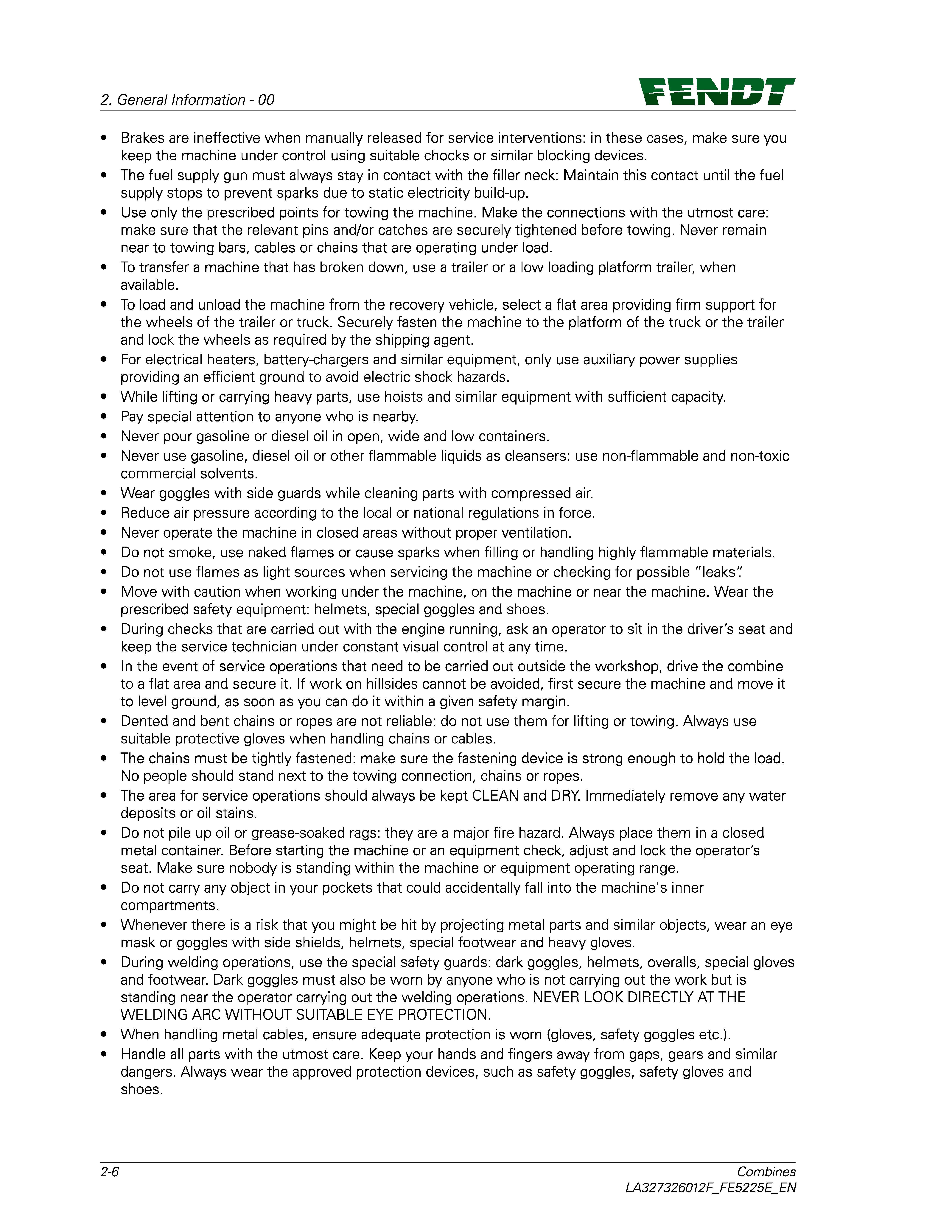
3 minute read
Product feeding - 60
2. General lnformation - 00
... ..-ra:.n1 .. .
• Brakes are ineffective when manually released for service interventions: in these cases, make sure you keep the machine under control using suitable chocks or similar blocking devices. • The fuel supply gun must always stay in contact with the filler neck: Maintain this contact until the fuel supply stops to prevent sparks dueto static electricity build-up. • Use only the prescribed points for towing the machine. Make the connections with the utmost care: make sure that the relevant pins and/or catches are securely tightened before towing. Never remain near to towing bars, cables or chains that are operating under load. • To transfer a machine that has broken down, use a trailer ora low loading platform trailer, when available. • To load and unload the machine from the recovery vehicle, select a flat area providing firm support for the wheels of the trailer or truck. Securely fasten the machine to the platform of the truck or the trai ler and lock the wheels as required by the shipping agent. • For electrical heaters, battery-chargers and similar equipment, only use auxiliary power supplies providing an efficient ground to avoid electric shock hazards. • While lifting or carrying heavy parts, use hoists and similar equipment with sufficient capacity. • Pay special attention to anyone who is nearby. • Never pour gasoline or diesel oil in open, wide and low containers. • Never use gasoline, diesel oil or other flammable liquids as cleansers: use non-flammable and non-toxic commercial solvents. • Wear goggles with side guards while cleaning parts with compressed air. • Reduce air pressure according to the local or national regulations in force. • Never operate the machine in closed areas without proper ventilation. • Do not smoke, use naked flames or cause sparks when filling or handling highly flammable materiais. • Do not use flames as light sources when servicing the machine or checking for possible "leaks': • Move with caution when working under the machine, on the machine or near the machine. Wear the prescribed safety equipment: helmets, special goggles and shoes. • During checks that are carried out with the engine running, ask an operator to sit in the driver's seat and keep the service technician under constant visual control at any time. • ln the event of service operations that need to be carried out outside the workshop, drive the combine to a flat area and secure it. lf work on hillsides cannot be avoided, first secure the machine and move it to levei ground, as soon as you can do it within a given safety margin. • Dented and bent chains or ropes are not reliable: do not use them for lifting or towing. Always use suitable protective gloves when handling chains or cables. • The chains must be tightly fastened: make sure the fastening device is strong enough to hold the load.
No people should stand next to the towing connection, chains or ropes. • The area for service operations should always be kept CLEAN and DRY. lmmediately remove any water deposits or oil stains. • Do not pile up oil or grease-soaked rags: they are a major tire hazard. Always place them in a closed metal container. Before starting the machine or an equipment check, adjust and lock the operator's seat. Make sure nobody is standing within the machine or equipment operating range. • Do not carry any object in your pockets that could accidentally fali into the machine's inner compartments. • Whenever there is a risk that you might be hit by projecting metal parts and similar objects, wear an eye mask or goggles with side shields, helmets, special footwear and heavy gloves. • During welding operations, use the special safety guards: dark goggles, helmets, overalls, special gloves and footwear. Dark goggles must also be worn by anyone who is not carrying out the work but is standing near the operator carrying out the welding operations. NEVER LOOK DIRECTLY AT THE
WELDING ARC WITHOUT SUITABLE EYE PROTECTION. • When handling metal cables, ensure adequate protection is worn (gloves, safety goggles etc.). • Handle all parts with the utmost care. Keep your hands and fingers away from gaps, gears and similar dangers. Always wear the approved protection devices, such as safety goggles, safety gloves and shoes.








